Sintra-Portugal.com
The best independent guide to Sintra
Sintra-Portugal.com
The best independent guide to Sintra
Sintra in 48 hours - a guide to two days in Sintra for 2025
Sintra is one of Portugal's finest tourist destinations, boasting opulent palaces, medieval fortresses and mystical gardens, all set amidst the cooling hills of the Serra de Sintra. Most tourists visit Sintra as a day trip from Lisbon, but the sheer number of fascinating sights means there is simply too much to cram into a single day of sightseeing.
Spending 48 hours in Sintra lets you explore at a more relaxed pace and fully appreciate each site rather than just tick boxes. Staying overnight also allows you to experience Sintra's true magic, once the crowds of tourists depart.
An alternative approach is to visit Sintra as two day trips from Lisbon, giving you flexibility to explore Lisbon and nearby areas on other days.
This guide will help you get the most from your two days in Sintra, by providing suggested places to visit, itineraries and insights from locals.
Related articles: A day trip to Sintra
What to see in two days in Sintra?
Before deciding if you want to spend two days in Sintra, here's an overview of the main attractions. Keep in mind that you can typically visit three sites in one full day of sightseeing.
Pena Palace (Palácio da Pena) - This fairytale castle rises high above Sintra from the remains of a 16th-century monastery. With its bold yellow and red walls and whimsical architecture, the palace and its vast forested grounds are Sintra's main attraction - though its worldwide fame means it is always crowded. Note: timed tickets are needed to visit the interior.
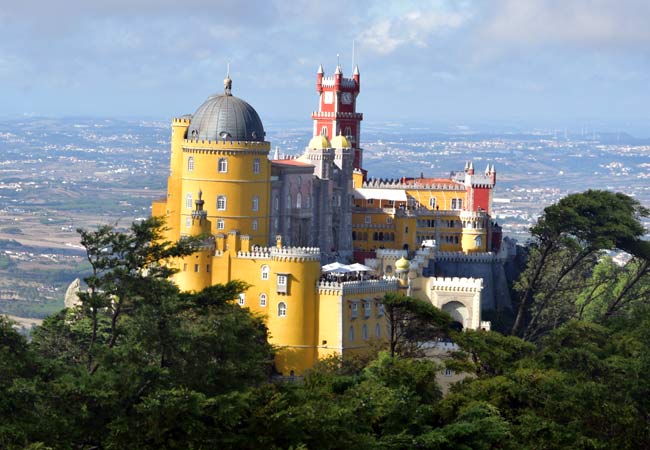
Quinta da Regaleira - Built as a wealthy merchant's fantasy in the early 1900s, this Gothic estate hides a world of mystery within its grounds. The gardens are a maze of secret tunnels, hidden wells and Masonic symbols, making it Sintra's second most visited site – the gardens will be packed in the summer months.
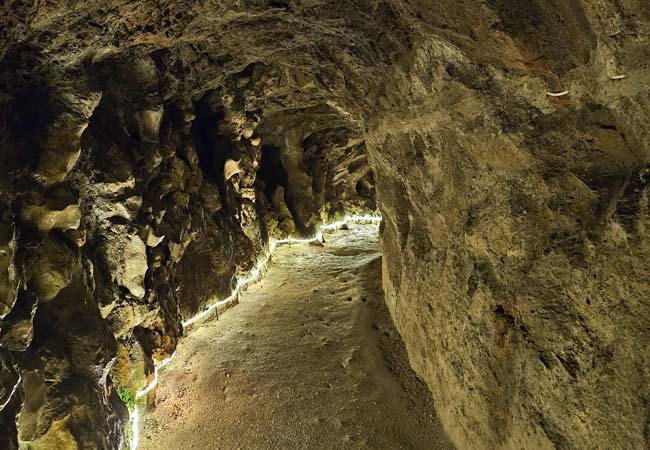
Monserrate Palace (Palácio de Monserrate) - A flamboyant villa blending Gothic, Indian and Moorish styles, surrounded by magnificent gardens. This is the hidden gem of Sintra and is the least visited major attraction of the town. Monserrate is ideal for a hectic summer's day when the tourist crowds are overwhelming.
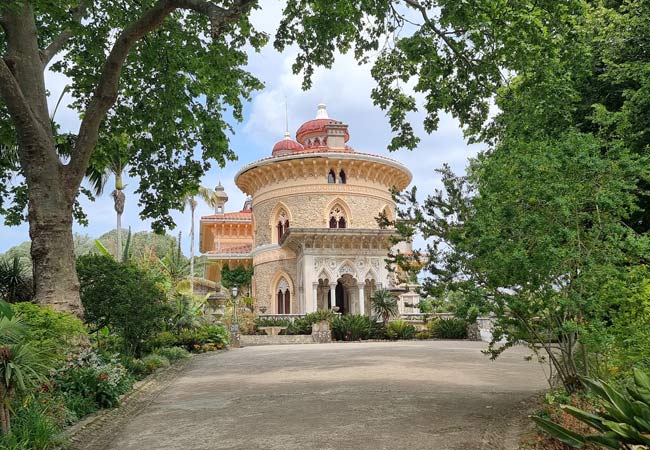
Moorish Castle (Castelo dos Mouros) – A medieval fortress with strategic views across Sintra and the Atlantic Ocean. This is a tourist attraction for energetic visitors, with watchtowers to climb and ancient battlements to walk along. Most visitors combine the castle with nearby Pena Palace, as they share the hilltop location.
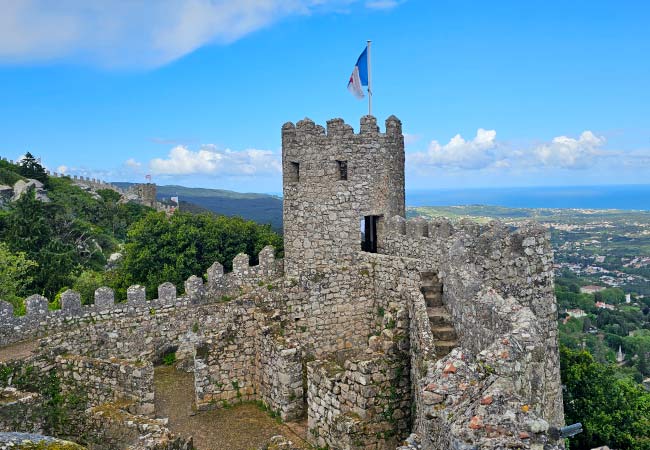
Sintra National Palace (Palácio Nacional de Sintra) - Standing in the heart of the old town, this is the best-preserved medieval royal palace in Portugal. The palace is instantly recognisable by its distinctive twin chimneys while inside, its lavishly decorated rooms tell the story of Portuguese royalty through the ages.
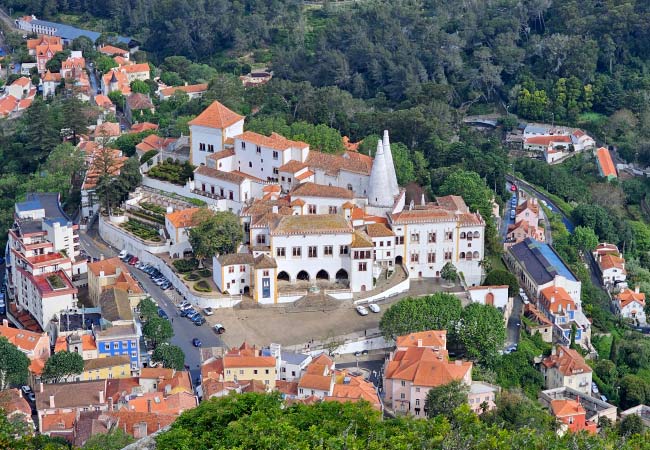
Optional Additional Sights:
Cabo da Roca - The westernmost point of continental Europe, offering dramatic clifftop views of the Atlantic Ocean and a rugged coastal landscape. Ideal for sunset but often windy and blustery.
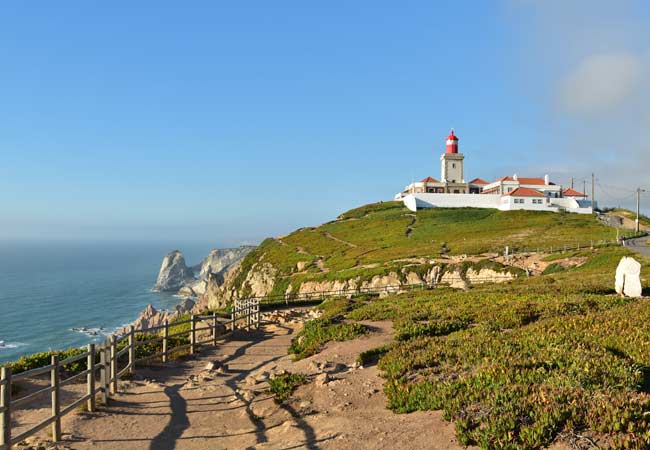
Convento dos Capuchos - An austere Franciscan monastery that is intertwined with the ancient forests. The monks' respect for nature and simple living created a unique sacred space - worlds apart from Sintra's grand palaces.
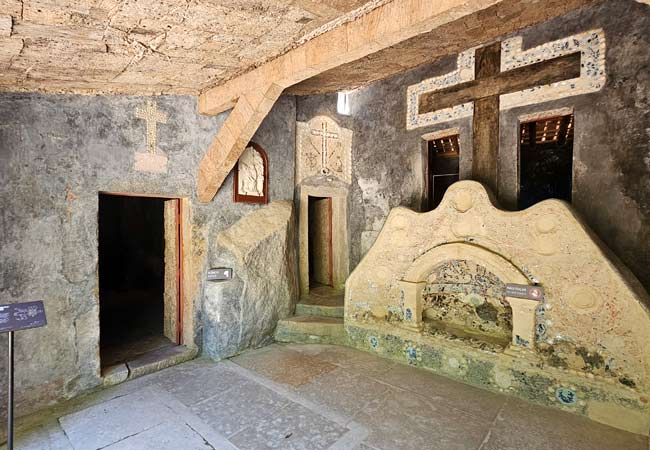
Praia da Maçãs - A charming beach town, sitting on a wide golden sand beach, which is connected to Sintra by a historic tram (summer months).
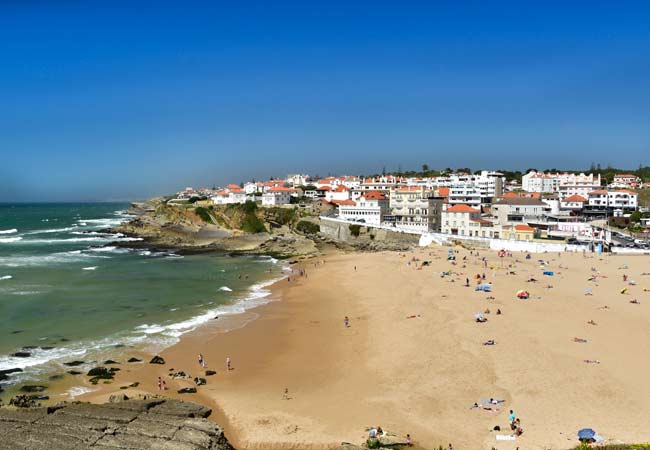
Suggested Two-Day Itinerary to Sintra
Day 1
• Pena Palace and its gardens (morning to avoid peak crowds)
• Castelo dos Mouros
• Historic centre of Sintra (optional)
Day 2
• Quinta da Regaleira (morning to avoid peak crowds)
• Palácio de Monserrate
• Palácio Nacional de Sintra (optional)
• Sunset at Cabo da Roca (optional)
A detailed guide to this itinerary, including timing and transport tips, follows in the next section.
Should You Spend a Night in Sintra?
Staying overnight in Sintra has clear advantages.
Having accommodation in the town allows you to start sightseeing early and continue later into the day, avoiding the midday crowds. The town transforms once the day-trippers depart (after 4pm), revealing its peaceful historic character.
However, there are drawbacks to consider. There are only a limited number of hotel and rental rooms, and they tend to be more expensive than in Lisbon. The dining scene of Sintra is also more limited than Lisbon, with options largely consisting of upscale restaurants or overpriced casual eateries.
For travellers already based in Lisbon, moving luggage to Sintra for a single night may not be worth the effort, and two separate day trips might be a better option. Another consideration is for onward travel, Sintra's limited transportation connections mean you'll need to return to Lisbon first before heading to destinations in central Portugal.
Advance booking is essential if you plan to stay in Sintra, particularly during peak season (June-September) when accommodation regularly sells out. The map below shows Sintra's best accommodation choices. Enter your dates to see current prices and availability.
Useful advice before planning your two days to Sintra
The Pena Palace is the highlight of Sintra, but its overwhelming popularity can impact your experience. Visitors who try to rush through as part of a packed day trip often leave disappointed.
To truly appreciate the palace, plan to spend at least 3 to 4 hours exploring its lavish interior, vibrant terraces, and sprawling grounds. A longer visit allows you to revisit the terraces at different times when the crowds might be less.
To best experience Pena Palace, arrive early in the morning when crowds are thinnest, though expect substantial visitor numbers even then. Purchase your palace interior tickets online beforehand – buying them on-site typically results in much later time slots, forcing you to either wait around or spend excessive time in the gardens before your scheduled entry.
Smart planning is essential for maximizing your time in Sintra. The Moorish Castle and Pena Palace, both situated on the same hilltop, and pair naturally for a day's exploration. Visiting them together minimizes your need for the busy 434 bus service or repeated taxi journeys.
While in Sintra, do not overlook the Palácio de Monserrate, the hidden gem of the town. It always has far fewer visitors than other palaces, and offers a peaceful escape from the tourist crowds. Monserrate may not have the Pena palace’s iconic status, but many visitors find Monserrate just as impressive, with its unique blend of architectural styles and peaceful atmosphere.
A detailed guide to 2 days in Sintra
Day 1 Morning: Palácio da Pena and Gardens
Start your day early to beat the crowds at Palácio da Pena – ideally being there for the 9:30 opening time. To travel up to the palace either take the 434 tourist bus or hire an Uber, Bolt or Taxi. Tuk-tuks can be a fun way to travel up but will be much more expensive.
The Palácio da Pena is whimsical palace, painted in vibrant hues of red and yellow, is a marvel of 19th-century Romantic architecture. Its colourful terraces, adorned with intricate stonework offer sweeping views of the surrounding hills of the Serra de Sintra.
The palace interior offers an equally fascinating experience, being preserved as they were in 1910 when the Portuguese monarchy fell. Highlights include the Royal Dining Room, where lavish banquets were once held, and the Arab Room, with its intricate Moorish-inspired ceiling. For a more personal insight into the Portuguese royal family are Queen Amelia's chambers with their original furnishings. To enter the interior of the palace time tickets are required – which can be purchased from Getyourguide.com here.
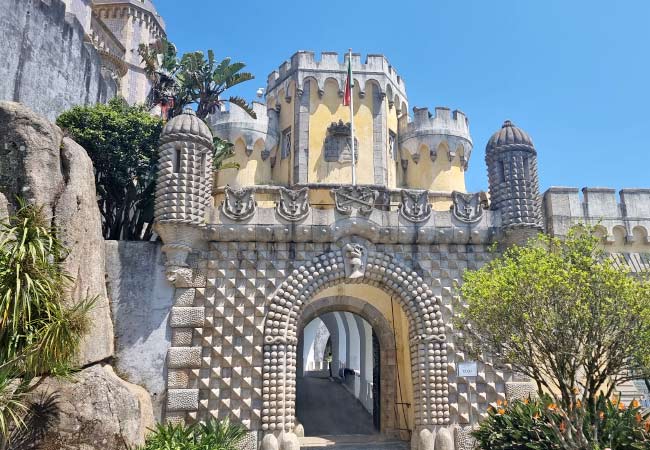
After exploring the palace, resist the temptation to rush off. The gardens of Palácio da Pena are a treasure trove of sights, and many visitors overlook them. A rewarding 30-minute walk leads to Alto do Chá, a tranquil spot offering arguably the best views of the palace.
The path to High Cross (Alto da Cruz) offers a peaceful 20-minute forest walk, while the Valley of Lakes provides a tranquil spot to rest by duck-filled ponds. Be sure to visit the Chalet of the Countess of Edla, an Alpine cottage that tells the romantic story of King Ferdinand II and his second wife.
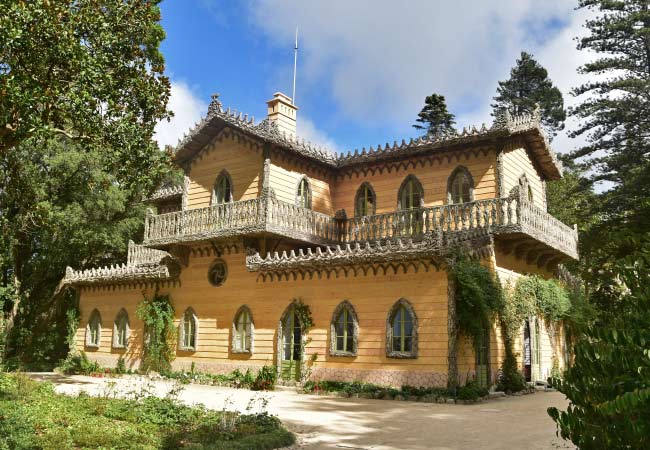
Lunch options are limited at the top of the hill, with the Palace’s café being your best choice. While the food is simple, dining here is practical – as it saves a trip down to Sintra. Revisiting the palace at lunchtime also provides the chance to see the palace's colourful terraces again when the morning crowds have typically thinned.
Afternoon: Castelo dos Mouros
From the entrance of Palácio da Pena, it's a short 15-minute downhill walk to the Castelo dos Mouros. This fortress dates from the 9th century and sits high above Sintra, clinging to a rocky outcrop. It served as both a defensive position and strategic viewpoint, with views over Sintra and out across the Atlantic Ocean.
The castle requires some energy to explore and a head for heights – you'll be climbing numerous steep steps to reach its towers, or weaving along ancient battlements with perilous drops on either side.
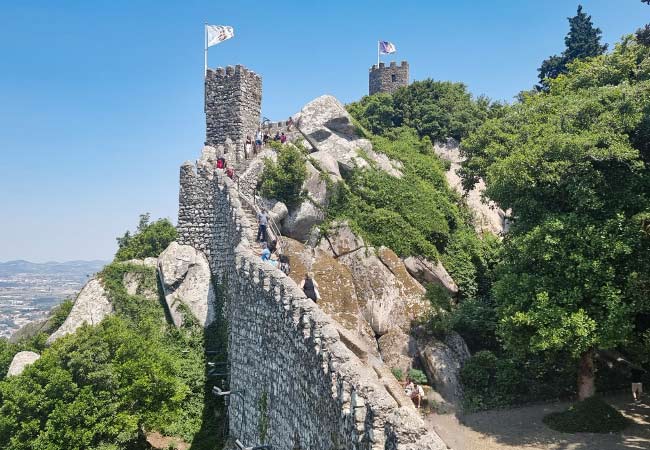
The Torre Real (King's Tower) is the castle's highest point, which is reached by a demanding 220-step climb. This magnificent viewpoint was a favourite spot of King Ferdinand II and offers stunning views of the region and the Palácio da Pena.
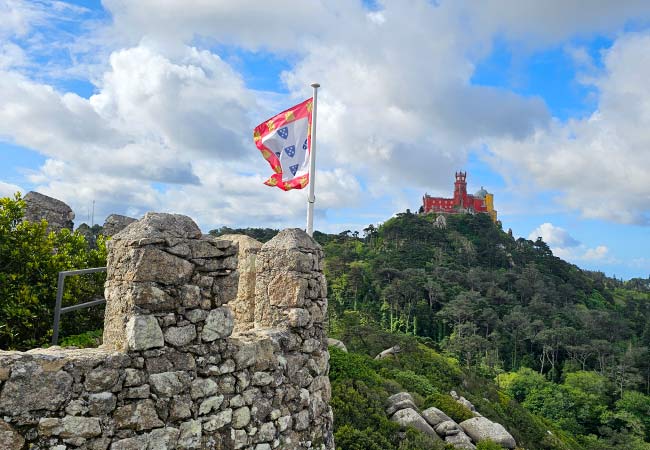
After exploring the castle, you have several options to return to Sintra's historic centre. You could take a bus, taxi or Uber for convenience, but for a more scenic and peaceful route, opt for the Caminho de Santa Maria footpath. This scenic 20-minute downhill trail winds its way past the castle's outer walls and giant boulders, and offers many wonderful view points.
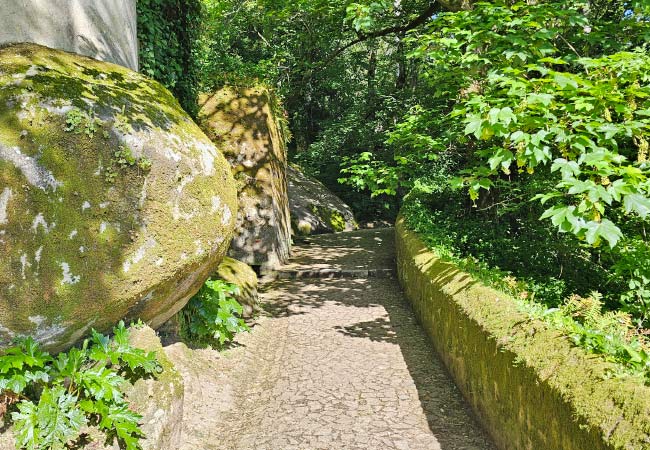
Late afternoon: Exploring the Historic Centre of Sintra
As the afternoon draws to a close, the number of tourists in Sintra lessens, making this a pleasant time to explore the historic centre before either heading back to your accommodation or the train station.
If you have energy for further sightseeing head to the Palácio Biester. This striking 19th-century neo-Gothic mansion offers a glimpse into the opulent lives of its former residents. Inside, you’ll find ornately decorated rooms with exquisite woodwork and stained glass. The surrounding gardens are equally impressive, with paths winding through lush greenery.
The grounds of Vila Sassetti offer a peaceful evening walk. This picturesque villa takes its inspiration from northern Italian architecture and is surrounded by terraced gardens and tranquil pathways.
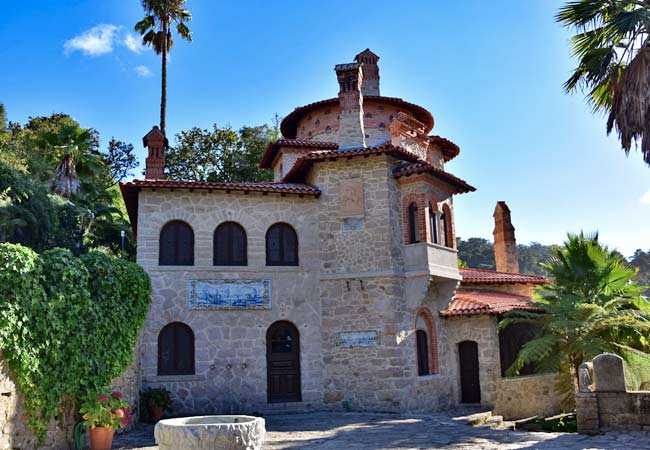
No visit to Sintra is complete without sampling its famous queijadas at Casa da Sapa. These traditional cheese and cinnamon tarts have been made here since 1756, following a secret recipe.
While walking back to the train station, you will pass Sintra's Town Hall, an extravagant 1910 building that combining Neo-Manueline and Neo-Gothic elements. Its clock tower stands as a local landmark, while the building's decorated windows and carved stone details reflect Sintra's architectural heritage.
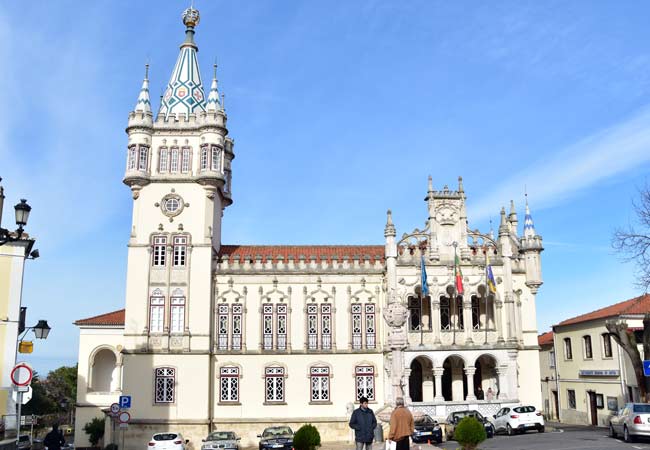
Second day in Sintra
Morning: Quinta da Regaleira
Begin your day at Quinta da Regaleira, an enchanting estate nestled just a 15-minute walk from Sintra's historic centre. Arrive for opening time at 10am to explore the grounds before the busiest period between 11am and 3pm. Head straight to the famous Initiation Well and its network of caves – these popular spots become crowded quickly, so experiencing them in the quieter morning hours allows you to fully appreciate their mystical atmosphere.
Built in the early 1900s, the Quinta da Regaleira stands as a masterpiece of Neo-Gothic architecture, its mansion and grounds concealing an extraordinary world of symbolism and secrets. At its heart lies the Initiation Well, a 27-metre-deep inverted tower. A spiral staircase winds down its stone walls, leading to a labyrinth of underground tunnels that connect hidden caves, mysterious grottoes, and ornate fountains across the estate.
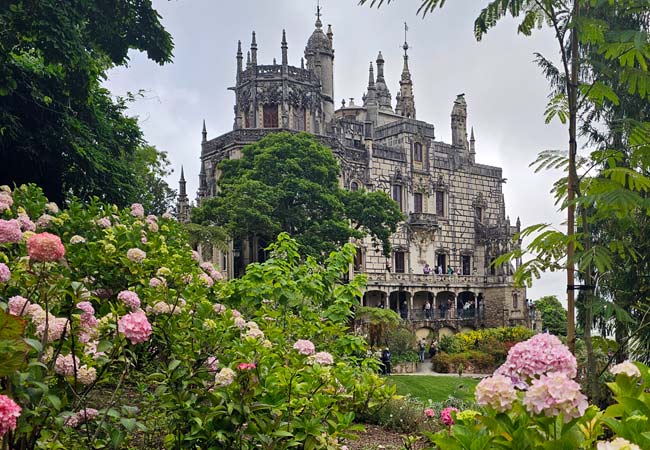
The gardens tell a story of mysticism through symbols and architecture. Masonic influences appear in the design of fountains and doorways, while references to ancient alchemy and the Knights Templar are woven into the landscape. You'll discover small lakes, winding paths, and ornate benches tucked away in quiet corners. The estate rewards curious visitors - every arch and grotto seems to lead to another secret waiting to be uncovered.
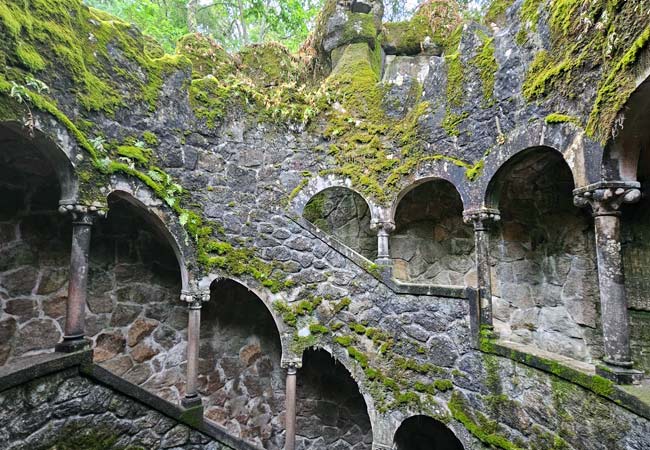
After exploring the Quinta da Regaleira, head back to Sintra's historic centre for lunch or a late breakfast.
Mid-day: Palácio de Monserrate
The Palácio de Monserrate was built in 1856 for Sir Francis Cook, an English textile millionaire, and designed by architect James Knowles. The palace remains one of Sintra's quieter sites, offering a more relaxed visit away from the busier attractions.
The palace stands as a masterpiece of 19th-century Romantic architecture, blending Gothic, Indian, and Moorish styles into an extraordinary building. The exterior features limestone filigree work, ornate windows, and geometric patterns that reflect its diverse influences. Inside, the domed music room serves as the palace's crowning glory, where the design allows whispers to carry across the space. Its Islamic-inspired horseshoe arches and arabesque patterns complement the gilded details and plasterwork.
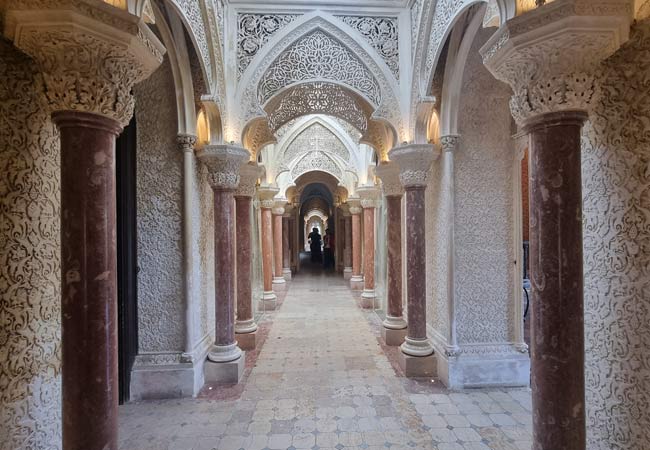
The gardens at Monserrate rank among Portugal's most significant botanical collections. Designed in the 19th century, they span over 30 hectares with plants from across the globe. The Mexican garden houses rare cacti and succulents, while the rose garden blooms with heritage varieties and climbing specimens. In the fern valley, ancient tree ferns from Australia and New Zealand create a prehistoric atmosphere beneath their spreading canopies.
The garden's design takes advantage of Sintra's unique microclimate. A network of streams and waterfalls flows through the grounds, their paths engineered to maintain moisture and cool temperatures. This system allows tropical and subtropical species to flourish alongside Mediterranean plants. The gardens also feature ruins of a chapel, now draped in exotic climbers.
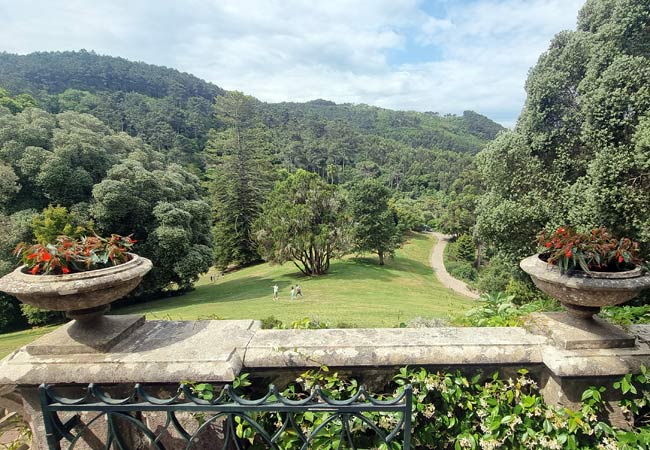
Afternoon: Palácio Nacional de Sintra
Built by the Moors in the 11th century, the Palácio Nacional de Sintra later became Portugal's most used royal residence. For over 400 years, from the 15th to 19th centuries, Portuguese royalty made it their preferred residence. This legacy is reflected in waves of royal renovations, from King João I's extensive 15th-century modifications to Manuel I's ornate additions in the 16th century.
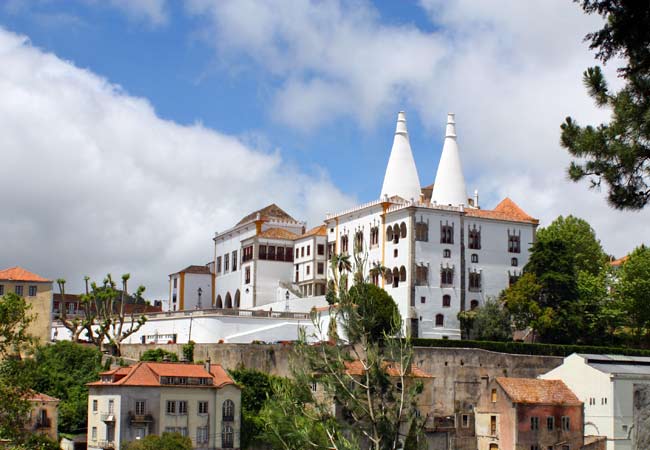
The palace's state rooms unfold as a series of architectural treasures, each telling its own story of royal life. The magnificent Sala dos Brasões (Coat of Arms Room) showcases a domed ceiling decorated with the coats of arms of 72 noble Portuguese families. The Swan Room captivates visitors with its ceiling of gilded swans, while the Magpie Room holds a fascinating tale - King João I ordered its ceiling painted with magpies after being caught kissing a lady-in-waiting, a pointed jest at his gossiping courtiers.
Rising above Sintra's skyline, the palace's distinctive twin chimneys mark its vast medieval kitchen, their conical forms venting two enormous fireplaces that once roared with royal feast preparations. This remarkable kitchen still holds its original features, from copper pots to massive spits, offering a glimpse into centuries of royal banquets.
The Arab Room stands as testament to the palace's Moorish heritage, its walls adorned with vibrant 15th-century geometric tiles in rich blues and whites, their intricate patterns echoing Islamic artistic traditions.
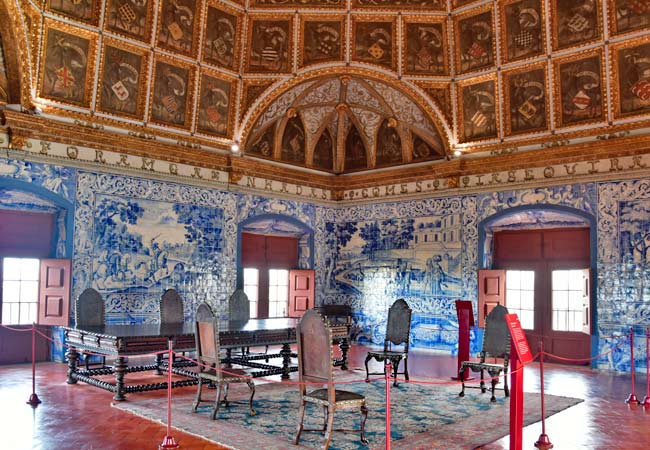
Sunset: Cabo da Roca
For a perfect end to your Sintra experience, head to Cabo da Roca for sunset. It's about a 20-minute drive by taxi/Uber (€15-20) or you can take the 1253 from Sintra train station.
As continental Europe's westernmost point, it offers dramatic views of the Atlantic Ocean from its 140-metre-high cliffs. There's something special about watching the sun disappear into the Atlantic at this historic point, where Portuguese sailors once set off to explore the world.
Bring a warm layer as it can get windy, and arrive about 30 minutes before sunset. Remember to check sunset times and bus schedules in advance if you're planning the Cabo da Roca trip, as times vary significantly throughout the year.

Our most popular guides to Sintra
If you've found our content valuable, we'd welcome your support.
The digital publishing landscape has evolved significantly. As a small independent publisher, we face growing challenges. Search engines increasingly favour paid content over organic results, while AI-generated content often reproduces original work without attribution.
To support our work, please consider bookmarking this page (press Ctrl + D) for quick access. If you find an article helpful, we'd be grateful if you'd share it with friends on social media.
For specific questions, please see our Reddit community at r/LisbonPortugalTravel.
Should you notice any outdated or incorrect information, please contact us at [email protected]
Thank you for helping us continue to provide valuable content in an increasingly challenging digital environment.
A complete list of all of our Sintra and Lisbon guides
If you've found our content valuable, we'd welcome your support.
The digital publishing landscape has evolved significantly. As a small independent publisher, we face growing challenges. Search engines increasingly favour paid content over organic results, while AI-generated content often reproduces original work without attribution.
To support our work, please consider bookmarking this page (press Ctrl + D) for quick access. If you find an article helpful, we'd be grateful if you'd share it with friends on social media.
For specific questions, please see our Reddit community at r/LisbonPortugalTravel.
Should you notice any outdated or incorrect information, please contact us at [email protected]
Thank you for helping us continue to provide valuable content in an increasingly challenging digital environment.






























